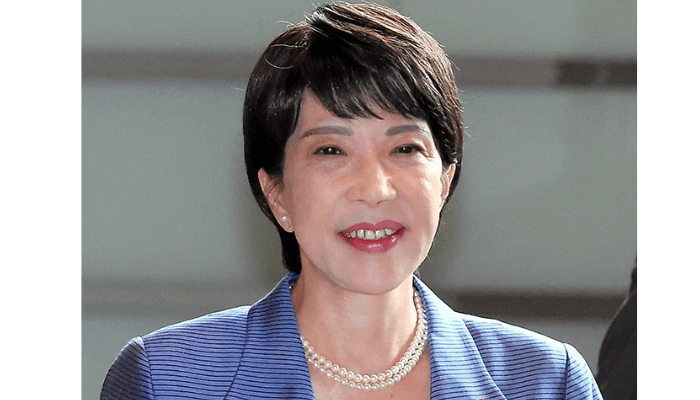Meet Sanae Takaichi, poised to be Japan’s first female Prime Minister
Meet Sanae Takaichi, the woman likely to become Japan’s first female Prime Minister
For the first time in Japan’s modern history, a woman might lead the government. Sanae Takaichi, a long-time conservative politician and close ally of the late Shinzo Abe, has been elected leader of Japan’s ruling Liberal Democratic Party (LDP) on its 70th anniversary. Her victory positions her to become Japan’s next prime minister, breaking one of the country’s most enduring political glass ceilings.
Read also: Japan scraps exchange programme after Kisarazu as Nigeria’s hometown’ distortion
Takaichi, 64, is no stranger to power. Born in Nara Prefecture in 1961, she studied business administration at Kobe University before entering politics in the early 1990s. In 1993, she became one of the few women elected to Japan’s parliament at a time when female lawmakers were rare in the nation’s male-dominated political world. Over the past thirty years, she has built a reputation as a tough, disciplined operator who does not shy away from controversy.

Read also: Ishiba resigns as Japan PM after election loss, pledges handover to younger generation
Her rise to the top of the LDP marks a moment of both continuity and change. The party has governed Japan for most of the post-war period, but recent years have been marred by falling approval ratings, corruption scandals, and growing public frustration. Takaichi’s victory over younger rival Shinjiro Koizumi signals the party’s preference for experience, steadiness, and ideological clarity over generational renewal.
Politically, Takaichi sits firmly on the conservative wing of the LDP. She has consistently backed strengthening Japan’s defence forces, tightening national security laws, and upholding what she calls “traditional Japanese values.” She opposes legalising same-sex marriage and allowing married couples to use separate surnames, positions that critics see as outdated in a rapidly changing society.
Read also: Meet Japan’s next prime minister candidates
On foreign policy, will be seeking to rebuild trust with Washington after a period of tension in US-Japan relations. She has pledged to “make Japan strong and self-reliant,” vowing to boost defence spending and see through a tariff deal with the Trump administration agreed by the previous government. Such positions appeal to conservatives at home but could strain relations with Japan’s neighbours, particularly given her past visits to the controversial Yasukuni Shrine, which honours Japan’s war dead, including convicted war criminals.

Her leadership also carries deep symbolic significance. Japan has long lagged behind other developed nations in gender equality, and women hold only about 15.7 perecnt of seats in the lower house of parliament, according to data from the Inter-Parliamentary Union. Takaichi’s rise could inspire more women to enter politics.
Away from politics, Takaichi leads a reserved and largely private life. She is married to Taku Yamamoto, a fellow LDP lawmaker in Japan’s lower house.

As she awaits formal election by parliament on October 15, Takaichi faces enormous challenges: reviving a slowing economy, addressing a rapidly ageing population, and restoring trust in a ruling party many voters view as detached from everyday struggles.
During her leadership campaign, she struck a balance between pragmatism and empathy. “The LDP must change for the sake of Japan’s present and future,” she said. “We will always put the national interest first and manage the country with a sense of balance.” She pledged to make babysitter fees partially tax-deductible and to grant corporate tax breaks to companies that provide in-house childcare, measures aimed at easing the pressures on working parents.
Her policy proposals also draw on deeply personal experience. “I have personally experienced nursing and caregiving three times in my life,” she said. “That’s why my determination has only grown stronger to reduce the number of people forced to leave their jobs due to caregiving, child-rearing, or children refusing to attend school. I want to create a society where people don’t have to give up their careers.”

